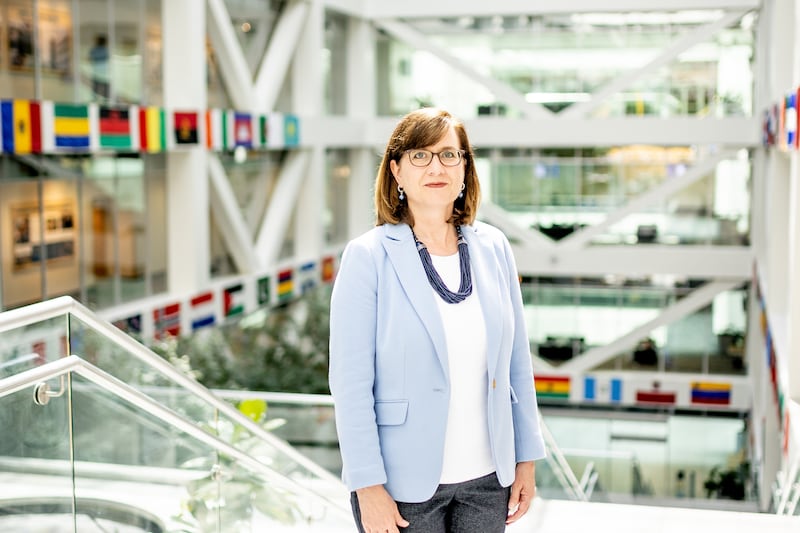The last book that Brigitte Madrian read was one she could have written. Its title: “How to Change.”
That’s a subject in which Madrian, the first female dean of the Brigham Young University Marriott School of Business, is fluent.
After all, she was behind the widely praised recrafting of the business school’s longtime mission statement, which one CEO says is the best articulation of a school’s vision and values that he’s seen recently.
Prior to that, Madrian made a major personal change, leaving the Harvard Kennedy School of Government in Boston, which she says promised her the “sun, moon and stars” to stay, for familiar ground in Provo, Utah.
Madrian, a behavioral economist who holds a doctorate from Massachusetts Institute of Technology, doesn’t take change lightly. She tends to choose a path and stick with it; she decided in eighth grade, for example, that her future would include a doctorate and she had been at Harvard’s public policy school for nearly 13 years when BYU Marriott came calling. She has said she could easily have finished her career in Boston, but ultimately came to believe that God wanted her to return to the campus where she spent so much time in her childhood. (Her father, Spencer J. Condie, was a BYU sociology professor.)
Madrian, who is 55 and married with two daughters, took over at BYU Marriott in January 2019. Despite her familiarity with the university and its mission — she graduated with an economics degree in 1989 and spoke at commencement — she found herself hesitating when asked how the business school’s mission was different from the university overall. BYU Marriott had a mission statement, but it was more than a decade old.
Proposing the development of a new one was risky; the school’s values and Christian mission hadn’t changed, after all. But it turned out to be a unifying exercise for leadership, faculty and staff during the pandemic. Moreover, doing the challenging and time-consuming work of crafting BYU Marriott’s “vision, mission and values” — which the school had printed on 5,000 cards to hand out — provides a shortcut for decision-making, especially when considering a change.
Says Madrian: “Our mission statement is now the scaffolding of everything we do.”
“Part of the process of change is bringing the people along who don’t necessarily welcome change or see its value.” —Brigitte Madrian
As a faith-based school, it’s fitting for BYU to focus on “things of eternal consequence.” But there’s a secular way to express this: making decisions and changes with “the end in mind.”
As an example, a decade ago, Madrian, whose research has focused on household finance and savings, was leading a new initiative at the National Bureau of Economic Research on Household Finance that involved planning one or two economic conferences every year.
The economics profession, she says, had a reputation for conferences that were divisive and contentious; that’s something that Madrian and her co-leaders wanted to change. To do so, they set out to plan conferences with “the end in mind,” and then made choices that would enable the goal.
Instead of just aggregating several individual papers to build a program, they thought about what kind of discussion they wanted to have, who would best facilitate that discussion and created a program around those constraints.
The format for a program that would facilitate the type of respectful discussion they wanted meant shorter presentations that would lead to fewer interruptions, a discussant who would model what they wanted and reserving several minutes for general discussion.
“It was definitely more work to plan a conference this way, because the easy choices that would take less time weren’t always consistent with the outcomes we wanted. But the effort we put in worked. We quickly established a conference culture that was very different from many of the other conferences,” Madrian says. “And as people experienced this culture and decided that they liked it, the conferences quickly grew both in terms of the number of people who submitted their work to be on the program, and in terms of the number of people who attended the conference.”
Effective change, Madrian says, requires three things of us: envisioning a different, better future, and the path to get from here to there; having the confidence to travel the path; and having the courage to act in the face of challenges, “that is, not to get derailed or give up when it gets hard,” she says.
“Many people are afraid of change because change invariably pushes people outside of their comfort zone. So part of the process of change is bringing the people along who don’t necessarily welcome change or see its value.”
This story appears in the September issue of Deseret Magazine. Learn more about how to subscribe.


